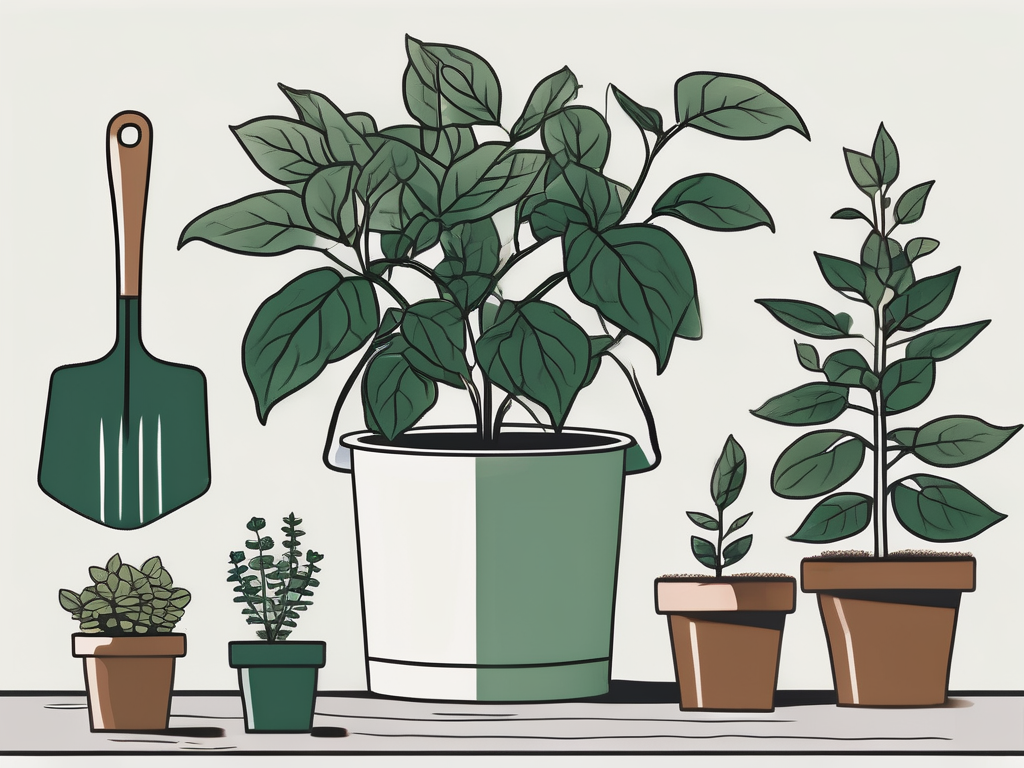
If you've ever found yourself captivated by the intricate patterns and vibrant colors of houseplants, chances are you've stumbled across the enchanting Calathea. These plants are a favorite among plant lovers for a reason—they're simply stunning. But with so many types of Calathea out there, how do you choose the right one for your space?
In this article, we're going to explore a variety of Calathea species, each with its own unique charm. We'll also touch on how to care for them and some tips for incorporating them into your home decor. Ready to discover your next plant obsession? Let's get started!
Calathea Orbifolia: The Showstopper
When it comes to making a statement, Calathea Orbifolia is hard to beat. This beauty boasts large, round leaves adorned with silvery stripes that catch the light just right. If you're looking for a plant that adds a touch of elegance to your home, this might be the one for you.
Caring for Calathea Orbifolia isn't too tricky, but it does have its preferences. It thrives in bright, indirect light, so placing it near a north-facing window is ideal. Keep the soil consistently moist, but be careful not to overwater—it doesn't like soggy feet! A well-draining potting mix will help with that.
Humidity is another critical factor for Orbifolia. These plants hail from tropical environments, so they appreciate a bit of extra moisture in the air. A humidifier or a pebble tray can make a world of difference. And if you're feeling fancy, a gentle misting now and then will keep those leaves looking lush.
- Light: Bright, indirect
- Water: Keep soil moist, not soggy
- Humidity: High, use a humidifier or pebble tray
Calathea Medallion: The Classic
Next up is the Calathea Medallion, a classic favorite among plant people. With its large, oval leaves featuring a striking pattern of deep green and burgundy, it's a real attention-grabber. The underside of the leaves showcases a rich purple hue, adding an extra layer of visual interest.
Medallions prefer similar conditions to their Orbifolia cousins. Bright, indirect light is best, as direct sunlight can scorch their leaves. Watering should be done regularly, ensuring the soil remains consistently moist. These plants are a bit finicky about water quality and prefer distilled or rainwater over tap water, which can contain minerals that may harm them.
Temperature-wise, keep things warm and cozy. Medallions dislike drafts and sudden temperature changes, so avoid placing them near vents or open windows. As with many Calatheas, humidity is key. If your home tends to be dry, consider clustering your Calathea with other houseplants to create a micro-humidity climate.
- Light: Bright, indirect
- Water: Use distilled or rainwater
- Temperature: Warm, stable
Calathea Lancifolia: The Rattlesnake
Calathea Lancifolia, commonly known as the Rattlesnake Plant, is a playful addition to any plant collection. Its long, wavy leaves are adorned with dark green spots that resemble the markings of a rattlesnake, giving this plant its quirky name.
One of the joys of owning a Lancifolia is watching it "pray" at night. Like many Calatheas, its leaves raise and lower in response to the daily light cycle, a phenomenon known as nyctinasty. It's like having a little piece of nature's choreography right in your living room!
This Calathea isn't too demanding, as long as you meet its basic needs. It loves bright, indirect light and thrives in slightly moist soil. Regular watering is essential, but like its relatives, it doesn't like to sit in water. Ensure proper drainage to keep it happy.
Humidity again plays a significant role in its care. If you notice the edges of the leaves browning, it's often a sign of too little humidity. A humidifier can work wonders, or you can regularly mist the plant to increase moisture levels.
- Light: Bright, indirect
- Water: Regular, avoid overwatering
- Humidity: Essential, mist regularly
Calathea Makoyana: The Peacock
With a name like Peacock Plant, you can expect Calathea Makoyana to flaunt some serious flair. Its leaves are beautifully intricate, with dark green lines creating a feather-like pattern on a lighter green background. As the light catches these patterns, they appear almost iridescent, much like a peacock's tail.
Makoyana is a bit of a diva when it comes to light and water. It loves bright, filtered light but can tolerate lower light conditions, making it a versatile choice for different spots around your home. Keep its soil evenly moist, but don't let it sit in water. Consistent watering is key to maintaining its vibrant appearance.
This plant is also sensitive to tap water, so using filtered or distilled water is recommended. And, of course, it thrives in high humidity. If your home is on the dry side, a pebble tray or regular misting can help keep those leaves looking their best.
- Light: Bright, filtered
- Water: Evenly moist, use filtered water
- Humidity: High, maintain with misting
Calathea Roseopicta: The Rose-Painted
Calathea Roseopicta, or the Rose-Painted Calathea, is a true beauty with its striking pink and green leaf patterns. The leaves have a dark green border with bright pink streaks that look as if they've been painted on. It's a showstopper that can serve as a centerpiece in any room.
Roseopicta enjoys bright, indirect light, similar to other Calatheas. Direct sunlight can fade its vibrant colors, so it's best to keep it out of harsh rays. Watering should be regular, ensuring the soil stays moist but not waterlogged. This plant also appreciates high humidity, so a humidifier can be a great investment if you're serious about keeping it happy.
Temperature should remain stable, as Roseopicta doesn't like sudden changes. A warm, consistent environment will help it thrive. If you notice the leaves curling or browning at the edges, it's often a sign that the plant is either too dry or too cold.
- Light: Bright, indirect
- Water: Keep soil moist
- Temperature: Warm, stable
Calathea Rufibarba: The Furry Feather
Calathea Rufibarba, affectionately known as the Furry Feather Calathea, is a bit different from its relatives. Its leaves are long and slender with wavy edges, and it gets its name from the fuzzy texture on the underside of its leaves. This unique feature adds a tactile element to its visual appeal.
This plant prefers bright, indirect light and will appreciate a spot where it can get some dappled sunlight. Like other Calatheas, it enjoys a consistently moist environment, so regular watering is essential. Be cautious of overwatering, as it can lead to root rot.
Humidity is critical for Rufibarba's health. If your home is dry, consider using a humidifier or placing a pebble tray nearby. The fuzzy leaves also benefit from occasional misting, which can help maintain their softness and prevent browning.
- Light: Bright, indirect
- Water: Regular, avoid overwatering
- Humidity: High, mist occasionally
Calathea Zebrina: The Zebra Plant
Calathea Zebrina, or the Zebra Plant, is another showy Calathea with its bold, zebra-like stripes. The velvety texture of its leaves combined with the striking pattern makes it a popular choice for plant lovers looking to add a touch of drama to their collection.
Zebrina thrives in bright, indirect light but can tolerate lower light conditions, making it adaptable to various indoor environments. It prefers its soil to be kept consistently moist, so regular watering is crucial. Just be sure not to let it sit in water, as this can lead to root issues.
Humidity is, once again, an important factor. If your home lacks humidity, a humidifier or regular misting will help keep those leaves looking fresh. Temperature should be kept warm and stable, as Zebrina, like many other Calatheas, doesn't respond well to sudden changes.
- Light: Bright, indirect
- Water: Keep soil consistently moist
- Humidity: High, maintain with misting
Calathea White Fusion: The Rare Beauty
Calathea White Fusion is a plant that truly lives up to its name, with its striking white and green marbled leaves. This rare beauty is a bit of a diva but worth the effort for its unique appearance. The variegated leaves can brighten up any corner of your home, making it a sought-after addition for plant collectors.
As with other Calatheas, White Fusion enjoys bright, indirect light. Direct sunlight can bleach its leaves, so a spot with filtered light is best. Watering should be regular, keeping the soil evenly moist without letting it become waterlogged.
Humidity is essential for maintaining its vibrant appearance. It doesn't like dry air, so if your home isn't naturally humid, a humidifier can be a lifesaver. Additionally, using distilled or filtered water is recommended to avoid mineral buildup, which can affect the plant's health.
- Light: Bright, indirect
- Water: Keep soil evenly moist
- Humidity: High, use a humidifier
Final Thoughts
Calathea plants are a wonderful way to bring a splash of nature's artistry into your home. With a little attention to their needs for light, water, and humidity, you'll be rewarded with a vibrant and healthy plant collection that can transform any space.
At Cafe Planta, we love helping fellow plant lovers learn to care for their green companions. Whether you're looking for your first Calathea or adding to an existing collection, we're here to help! Feel free to email us with any questions, or connect with us on Instagram. We're passionate about sharing our love of plants and helping you nurture a thriving home garden. Happy planting!












